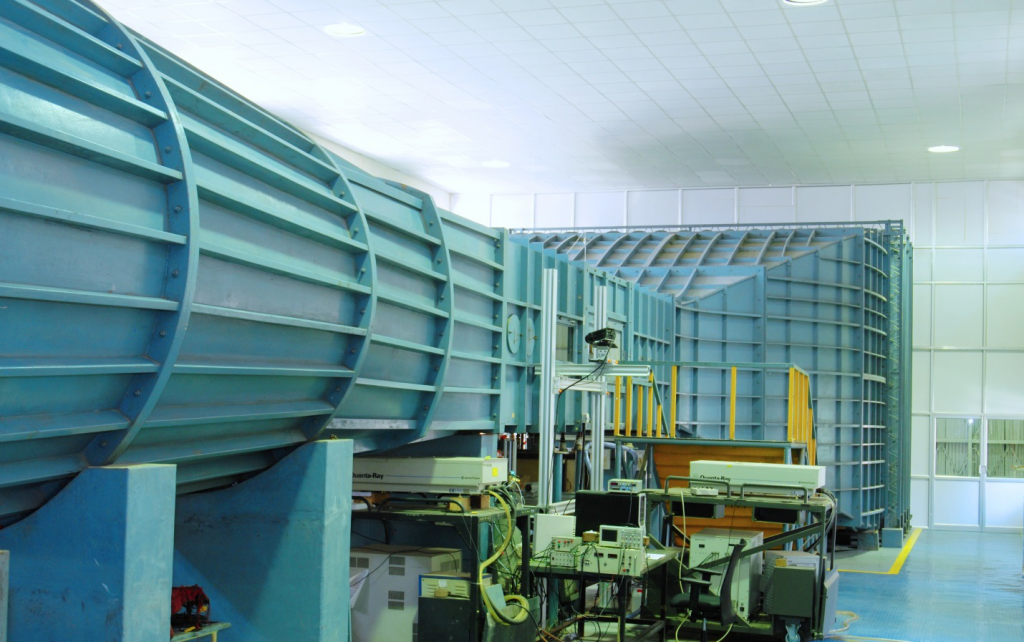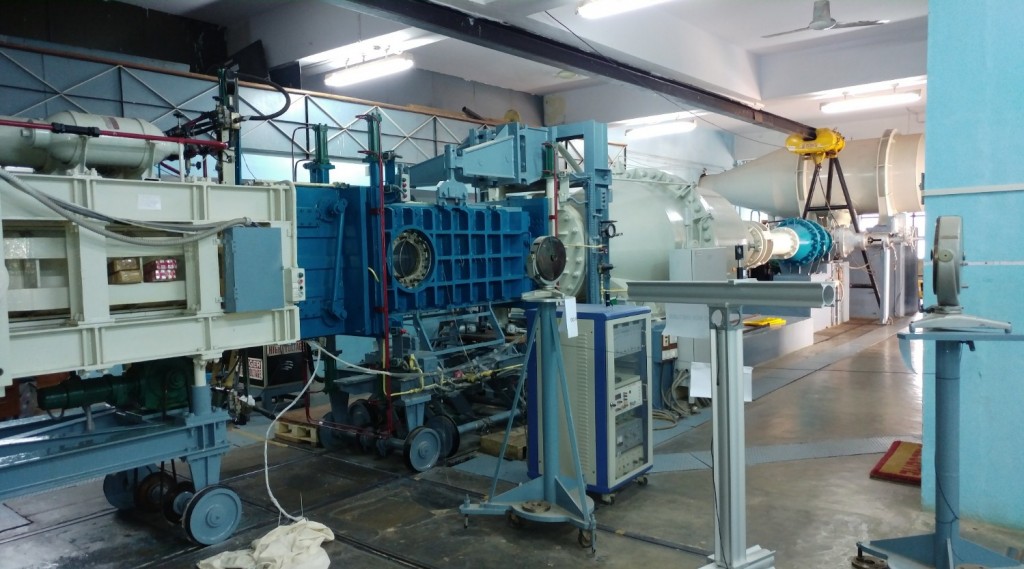
1.5m Low speed wind tunnel
The 1.5m Low speed wind tunnel is one of the very few experimental facilities in the country which is used both for industrial and fundamental research. It is equipped with state-of-the-art instrumentation for aerodynamic investigation. The experimental capabilities of this facility include force and pressure measurements for basic aerodynamic studies; particle image velocimetry (PIV) and laser doppler velocimetry (LDV) for advanced flow diagnostics; hotwire and hot-films for flow stability and transition related studies on the body of interest.
Specifications
- Open circuit – suction type
- Freestream Velocity 5m/s to 50m/s
- Turbulence intensity Less than 0.14%
- Test section size 1.5m (breadth) x 1.5m (width) x 6.5m (length)
- Contraction ratio 12:1
- Settling Chamber 6m x 4.5m bell mouth entry, honey comb (5.1cm x 5.1cm, 30cm deep), three screens (mesh size: 6, 3 and 1.5mm)
- Half angle = 3.5o, exit diameter = 3.05m
- 3.04m diameter, 12 bladed
- Motor rating 112.5 kW variable speed DC motor, 750 rpm (max)
- Overall dimension 28m in length, 4.5m in width, 6m in height
- Model support Sector turn-table with pitch and yaw capability, floor mounted support with pitch capability
Major clients of this facility
- The Boeing company, USA
- Airbus, France
- BrahMos Aerospace, India
- Mahindra & Mahindra Limited, India
- Aeronautical Development Agency (ADA), DRDO, India
- Aeronautical Development Establishments (ADE), DRDO, India
- Hindustan Aeronautics Limited (HAL), India
- KSRTC, India
Some of the notable research activities carried out in the tunnel are as follows:
- Missile drop test on Sukhoi-30 MKI and Mirage 2000 scaled models
- Investigation on Boeing’s rudimentary landing gear
- Studies on Mahindra’s sports utility vehicle (SUV) model
- Relaminarization studies in leading edge region of swept wing
- Powered propeller measurements on SARAS aircraft model, RUSTOM MALE UAV
- PIV measurements on SARAS wing-flap studying slot flow
- Drag reduction studies on KSRTC bus model
- Cross-flow transition studies on lower surface of 2D swept wing
Techniques employed in the facility for flow investigation
- Particle image velocitmetry (PIV)
- Laser Doppler velocimetry (LDV)
- Hotwire and hot-films
- Force measurements
- Pressure measurements
- Oil, tuft and smoke flow visualization.

 English
English हिन्दी
हिन्दी





